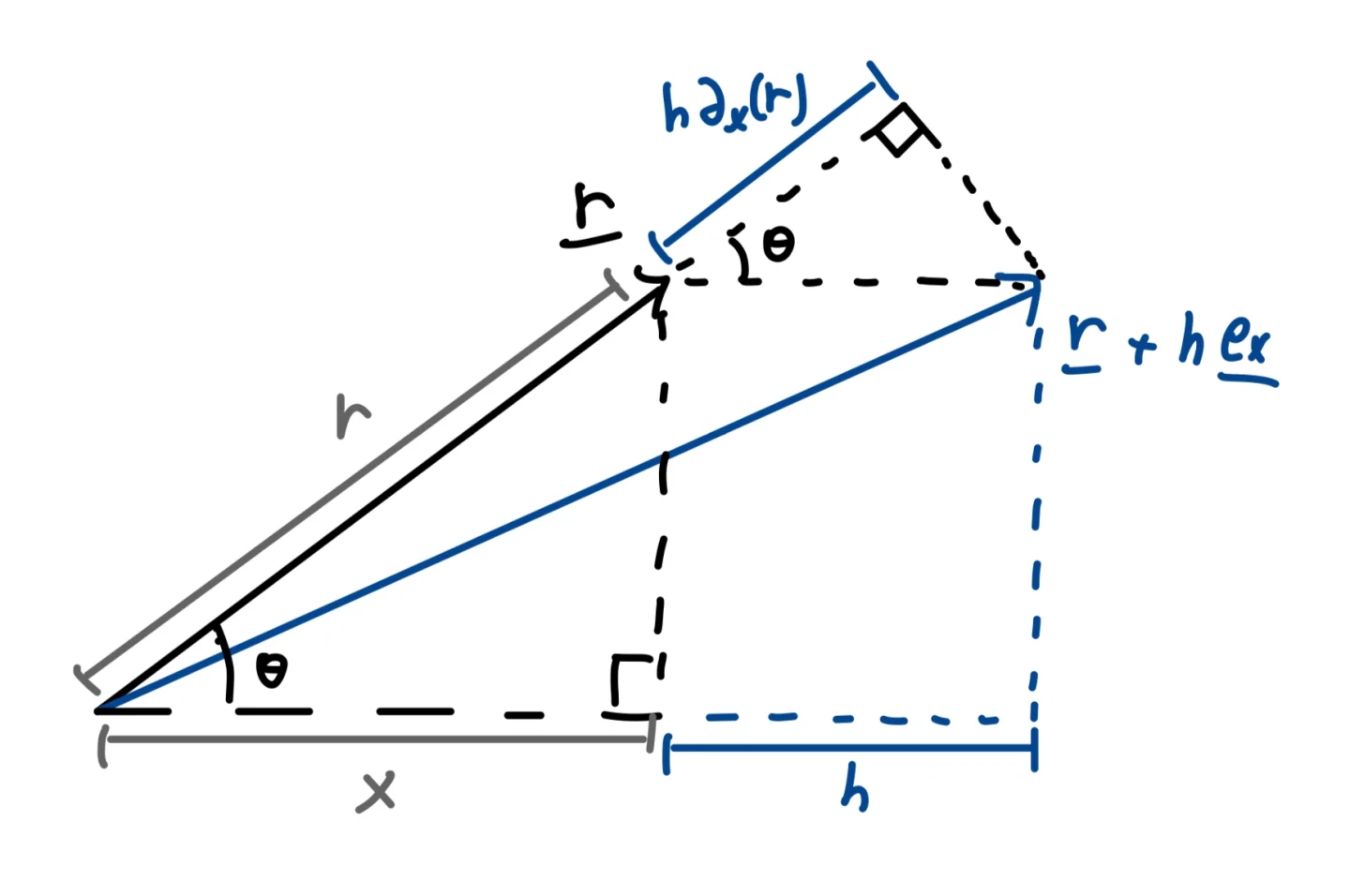Partial derivatives of the radius
We take partial derivatives of the radius with respect to Cartesian coordinates all the time, especially in physics. While we can very easily do so with the quotient / chain rule, I’ve always been annoyed by that process (e.g. dealing with fractional exponents / cancelling out the 2s). As such, below is a proof by picture which is hopefully more illuminating / less frustrating.
Suppose we have the vector \(\mathbf{r}\) living in \(\mathbb{R}^2\) decomposed into its components \(\mathbf{r} = x \mathbf{e}_x + y \mathbf{e}_y\), where \(\mathbf{e}_x = (1,0)\) and \(\mathbf{e}_y = (0,1)\). Let’s define \(r = \sqrt{x^2 + y^2} = \|\mathbf{r}\|\), the length of \(\mathbf{r}\).
To find \(\partial_x r\), we shall compare the length of \(\mathbf{r}\) and \(\mathbf{r} + h \mathbf{e}_x\) for some small \(h\). We notice that as \(h \to 0\), we have \(\|\mathbf{r} + h \mathbf{e_x}\| \to r + h \partial_x(r)\). Taking this approximation., we can draw the following picture.

Focus on the two similar right triangles in the above picture that share the same angle \(\theta\), we have
\[\cos \theta = \frac{x}{r} = \frac{h\partial_x(r)}{h} = \partial_x(r).\]Similarly, we can conclude
\[\sin \theta = \frac{y}{r} = \partial_y(r).\]These results further inform us of the gradient of the radius.
\[\begin{align*} \nabla r &= \partial_x(r) \mathbf{e}_x + \partial_y(r) \mathbf{e}_y \\ &= \frac{x}{r} \mathbf{e}_x + \frac{y}{r} \mathbf{e}_y \\ &= \frac{\mathbf{r}}{r} \end{align*}\]Algebraic method
We can also easily calculate that \(\nabla(x^2 + y^2) = 2 (x,y)\). So \(\nabla(r^2) = 2 \mathbf{r}\). Now by chain rule we also have \(\nabla(r^2) = 2r \nabla r\). Combining the two equations we get \(\nabla r = \mathbf{r}/r\).
Next maths post Previous maths postAll maths posts